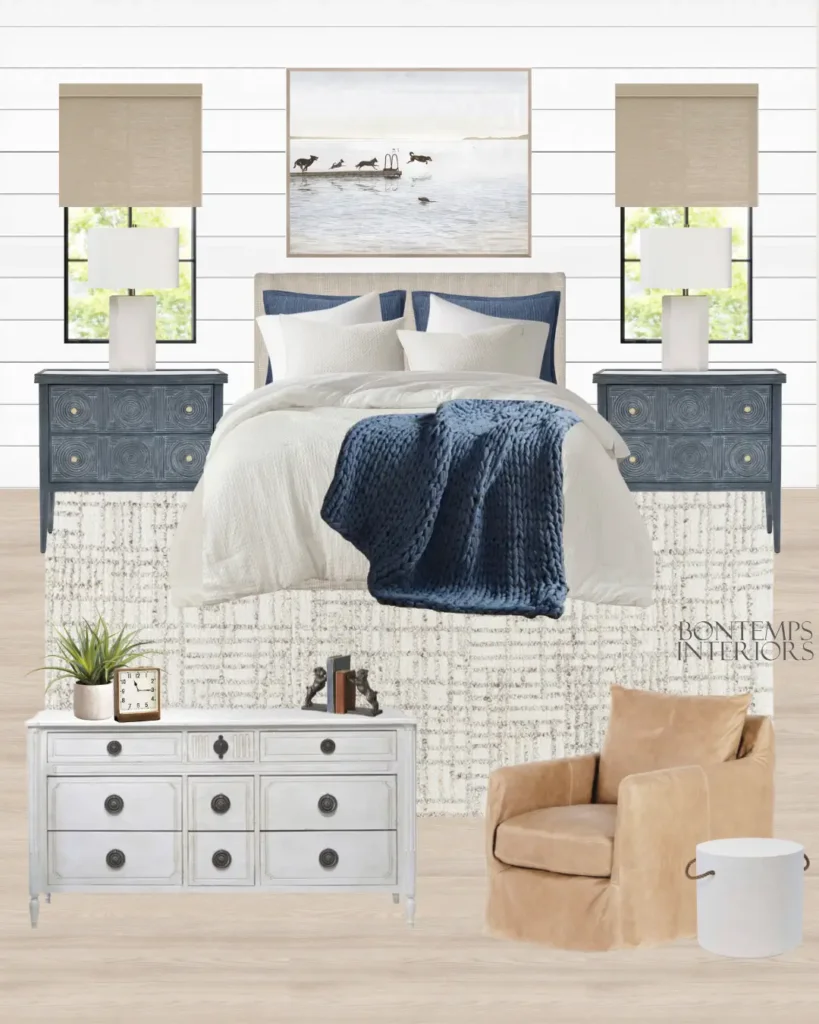When we talk about interior design, it’s easy to think of it purely in terms of aesthetics—colors, shapes, and textures that catch the eye. However, design goes beyond what looks good. It’s about creating a space that resonates with the person or people living in it. One way to think about this is by considering the concepts of masculine and feminine design.
While these terms may initially seem to enforce gender stereotypes, they actually refer to broader stylistic choices that can appeal to anyone, regardless of gender. By understanding the differences between masculine and feminine design elements, we can create spaces that balance these energies, resulting in a harmonious, inviting environment.

Masculine Design: Bold, Strong, and Minimalistic
Masculine design tends to focus on strong lines, bold colors, and minimalism. It’s about creating a space that feels grounded, solid, and functional. Here are some key characteristics:
- Color Palette: Masculine interiors often feature darker, richer colors like deep blues, charcoals, blacks, and earthy tones. These colors create a sense of intimacy and depth, making a room feel cozy yet powerful.
- Materials: The materials in masculine design are typically robust and durable. Think leather, metal, wood, and stone. These elements bring a sense of permanence and reliability to the space. For example, a leather sofa paired with a reclaimed wood coffee table exudes strength and durability.
- Lines and Shapes: Masculine design often embraces clean, straight lines and geometric shapes. This creates a sense of order and clarity, giving the space a structured and organized feel. Furniture tends to be functional with an emphasis on practicality over ornamentation.
- Minimalism: There’s a focus on simplicity and function in masculine design. Spaces are usually uncluttered, with each piece serving a purpose. Decorative items are used sparingly, allowing the room’s core elements to shine.
- Industrial Influences: Masculine spaces often draw inspiration from industrial design, featuring exposed beams, metal fixtures, and raw, unfinished surfaces. This adds a rugged, edgy vibe to the room, making it feel authentic and unpretentious.

Feminine Design: Soft, Elegant, and Expressive
In contrast, feminine design is all about softness, elegance, and expressiveness. It emphasizes comfort, beauty, and a more decorative approach. Here’s what defines feminine design:
- Color Palette: Feminine interiors usually feature lighter, softer colors like pastels, blush tones, creams, and light grays. These hues create an airy, welcoming atmosphere that feels gentle and soothing.
- Materials: Feminine spaces incorporate materials that are softer and more tactile. Think of plush fabrics like velvet, silk, and linen. These materials add a layer of comfort and elegance, inviting you to relax and unwind.
- Lines and Shapes: Feminine design favors curvier, more organic shapes. Rounded furniture, soft edges, and flowing lines create a sense of movement and grace. This adds a touch of delicacy and refinement to the space.
- Layers and Textures Unlike the minimalist approach in masculine design, feminine spaces often feature layers of textures and patterns. This could include floral prints, intricate lace, or patterned wallpapers. The layering adds depth and richness, making the room feel more inviting and cozy.
- Decorative Details: Feminine design embraces ornamentation and decorative touches. This might include chandeliers, vases of fresh flowers, or carefully curated art. These elements add personality and a sense of warmth, making the space feel lived-in and loved.

Finding the Balance: Blending Masculine and Feminine Design
While masculine and feminine design styles can stand alone, some of the most beautiful interiors find a balance between the two. This is where the magic happens—combining the strength and simplicity of masculine design with the softness and warmth of feminine elements can create a space that feels complete and harmonious.
- Contrast and Complement: Pairing dark, solid furniture (masculine) with soft, plush throw pillows or a light-colored rug (feminine) creates a pleasing contrast. The hard and soft elements complement each other, making the room feel balanced.
- Incorporating Nature: Bringing in natural elements, like plants or wooden accents, can soften a masculine space or add structure to a feminine one. Nature often strikes a balance between strength and delicacy, making it a perfect bridge between these two design styles.
- Personal Touches: Ultimately, your space should reflect who you are. Blending masculine and feminine elements allows for a more personalized and layered look. You might prefer the clean lines of masculine design but crave the warmth that feminine details bring. Don’t be afraid to mix and match to create a space that feels uniquely yours.
In conclusion, understanding the differences between masculine and feminine design can help you create spaces that are not only visually appealing but also deeply personal. Whether you lean towards one style or enjoy blending both, the key is to create a home that feels balanced and true to your identity. After all, the best design is one that resonates with you every time you walk through the door.